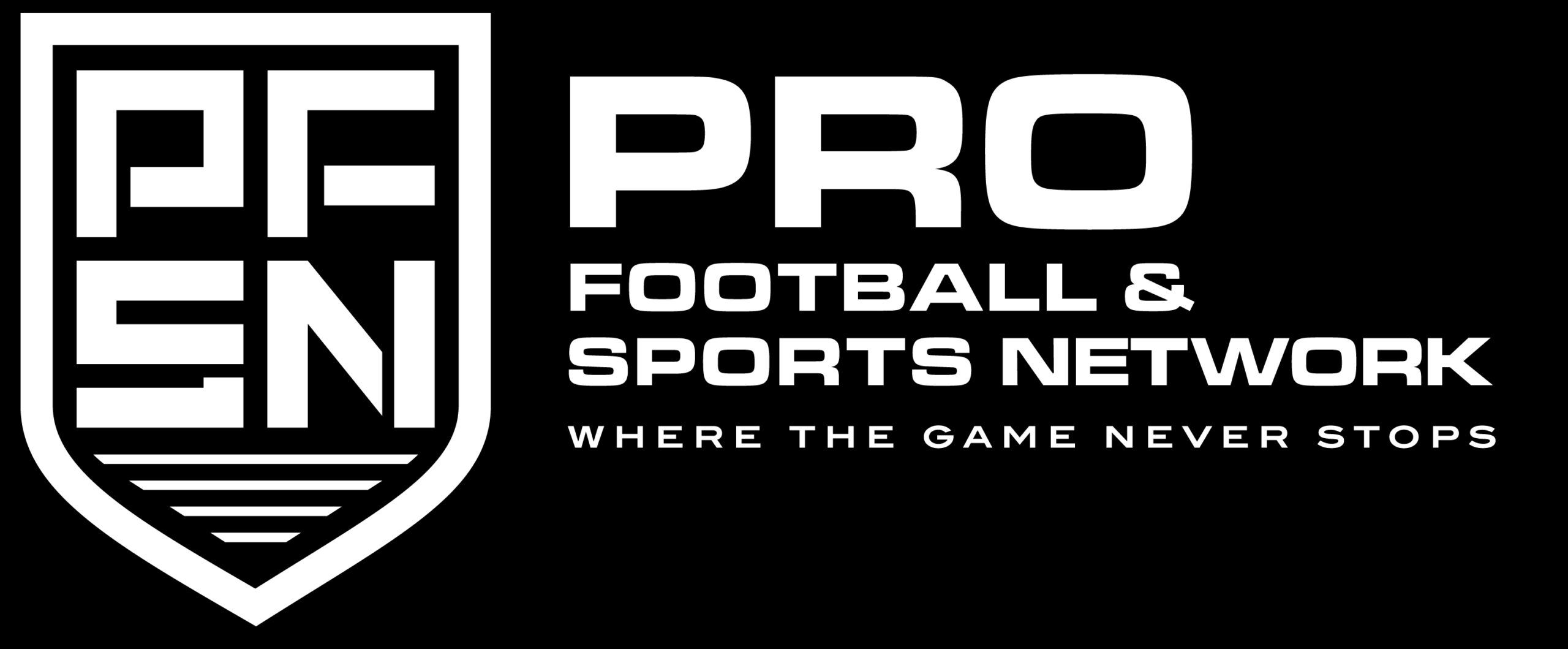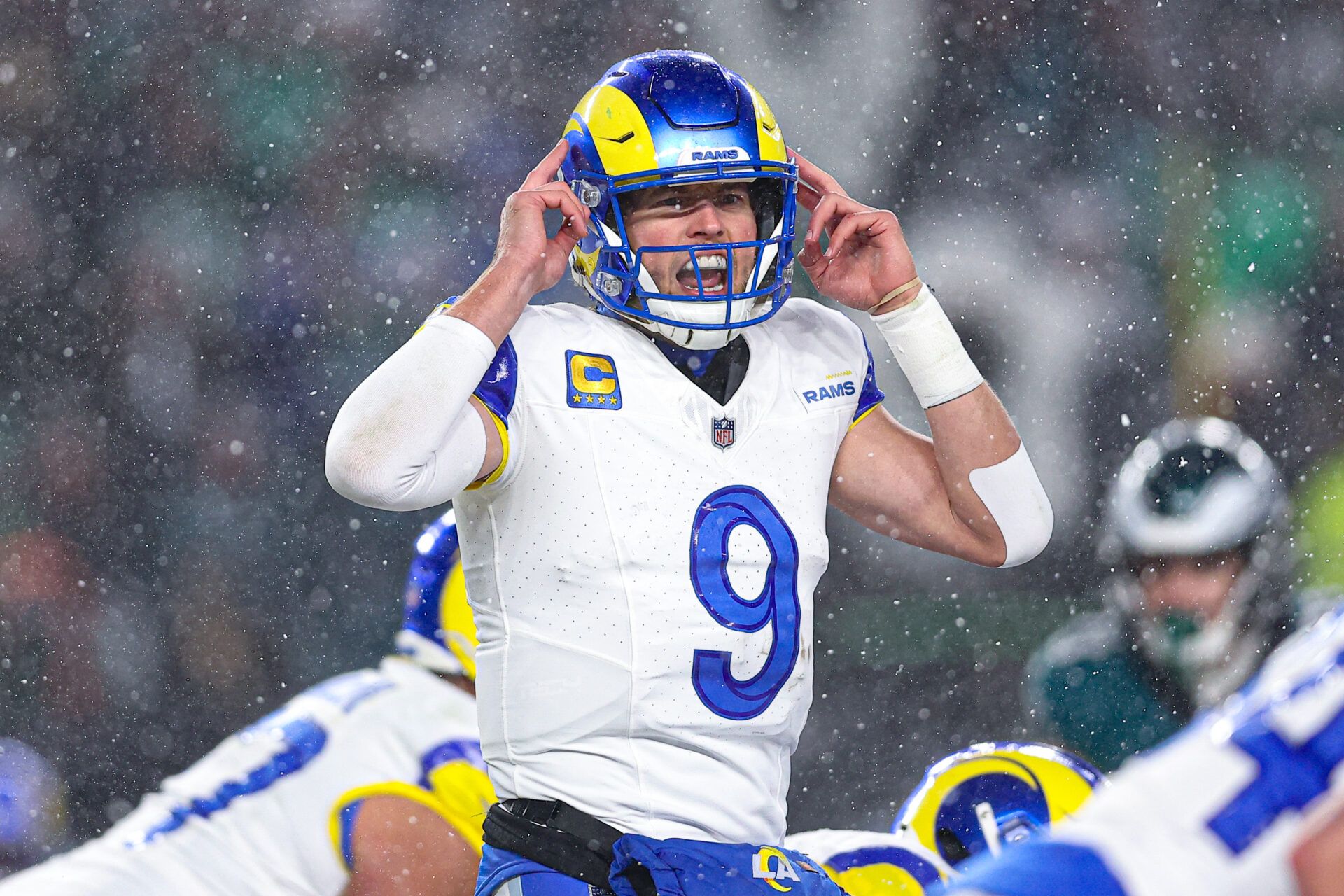Matthew Stafford’s 16th NFL season and fourth with the Los Angeles Rams concluded with a Divisional Round loss to the eventual Super Bowl champion Philadelphia Eagles.
At 37 years old, Stafford is the league’s second-oldest projected starting quarterback for 2025, behind only Aaron Rodgers (41). Pro Football Network examines the case for and against the Rams bringing Stafford back for another season in 2025.

Why the Rams Should Keep Matthew Stafford
Stafford was healthy and reasonably productive in 2024, marking the first season since 2021 that he didn’t miss a game due to injury. However, he did sit out the team’s Week 18 contest this season as a coach’s decision.
While Stafford’s counting stats weren’t spectacular, many of his rate stats showed improvement compared to 2023. He increased his completion percentage from 62.6% in 2023 to 65.8% this season and improved his success rate from 47.6% to 49.0%. Additionally, he reduced his interception rate from 2.1% to 1.5%, the lowest of his career (excluding the 2010 season, when he played only three games).
The Rams have a strong supporting cast to support Stafford as he continues to age. Even with the expected trade of Cooper Kupp, Puka Nacua and Kyren Williams are both under contract for next season. Additionally, Los Angeles benefits from significant cap flexibility due to a young and cost-effective defense.
Spotrac estimates the Rams will have just under $40 million in cap space for 2025, the 15th-most entering this offseason. Trading Stafford would leave a $45.3 million dead cap hit on the Rams’ books if they trade him before June 1. Stafford would also account for $22.7 million in dead money in 2026 if traded in this timeframe.
If the Rams can convince a trade partner to process a Stafford deal after June 1, then Los Angeles would have dead money hits of $22.7 million in both 2025 and 2026. Under a post-June 1 scenario, the Rams would save $27 million in cap space this year and $31 million next year. However, an acquiring team would not have Stafford for OTAs and most of their minicamp practices if he’s not traded until after June 1.
In terms of draft assets, the Rams won’t have their second-round pick after trading up last year to select defensive tackle Braden Fiske. However, they do hold an extra third-round compensatory pick, awarded due to the Atlanta Falcons hiring Raheem Morris as their head coach.
Rams head coach Sean McVay has shown no indications of leaving, which provides the Rams with an exceptionally high floor. Since McVay took over in 2017, the Rams have made the playoffs in six of eight seasons and posted a winning record in seven of them.
MORE: Simulate the 2025 Offseason With PFSN’s NFL Offseason Manager
Additionally, Los Angeles has boasted a top-10 scoring offense in four of those eight seasons. The 2024 Rams finished 20th in scoring offense, but PFSN’s Offense+ metric indicates they performed at a higher level. Los Angeles ranked 11th overall with a 79.5 (C+) grade in the metric.
Since Stafford arrived in 2021, the Rams have ranked sixth, seventh, and 11th in Offense+ during his healthy seasons (they fell to 25th in 2022 when Stafford was limited to nine games).
Also, replacing Stafford won’t be easy. Unless the Rams feel comfortable handing the reins over to Sam Darnold, Aaron Rodgers, Russell Wilson, Justin Fields, or a rookie, figuring out a solution with Stafford is likely their best bet.
Why the Rams Should Trade Stafford
While Stafford’s production was solid overall, some indicators suggest he may be in decline. PFSN’s QB+ metric graded him at 71.9 (C-), ranking 22nd among quarterbacks this season.
This was his second-lowest score since the metric’s inception in 2019, trailing only his injury-shortened 2022 season (64.6). Since leading the NFL in QB+ in 2021, Stafford has not finished inside the top 10 in the metric.
Matthew Stafford QB+ By Season with Rams
- 2021: 93.4 (A), 1st
- 2022: 64.6 (D), 26th
- 2023: 79.4 (C+), 14th
- 2024: 71.9 (C-), 22nd
Overall, Stafford’s production since the Super Bowl-winning season has mostly hovered around league-average. From 2022-24, he ranks 16th in EPA per dropback (0.06) and 12th in success rate (48%). Even if you just look at the last two seasons to exclude his injury-shortened 2022 season, Stafford ranks 13th in EPA per dropback (0.09) and 13th in success rate (48.3%) from 2023-24.
Wide receiver injuries didn’t help, but Stafford struggled to generate big plays in 2024. Only 13.2% of his completions went for 20+ yards, a sharp decline from 19.0% in 2023. He was also less effective on deep throws, with his completion percentage on passes traveling 20+ air yards dropping from 47.0% in 2023 to 42.0% this past season.
Stafford’s biggest area of concern reflects his age and limited mobility. Under pressure, he averaged -0.46 EPA per dropback, ranking 28th out of 36 quarterbacks. When kept clean, however, he remained effective, ranking seventh in EPA per dropback (0.31). This disparity means Stafford experienced the third-largest decline in EPA per dropback when pressured, trailing only Joe Flacco and Jalen Hurts.
As Stafford continues to age, he has become increasingly reliant on his offensive line. This season, he scrambled on just 1.2% of plays when pressured, the lowest rate among all qualifying quarterbacks.
The Rams’ offensive line was roughly average in pass protection this season. They ranked 13th in PFSN’s offensive line rankings during the regular season and allowed the ninth-lowest non-blitz pressure rate (29.7%), though some of that can be attributed to Stafford’s quick release.
By ESPN’s Pass Block Win Rate metric, however, the Rams ranked 20th, highlighting some inconsistencies in their pass protection performance. Left tackle Alaric Jackson and versatile backup Joseph Noteboom are both free agents. While the Rams certainly have the salary cap space to hang on to Jackson in particular, any further defections or a lack of improvement along the line could magnify Stafford’s injury risk.

